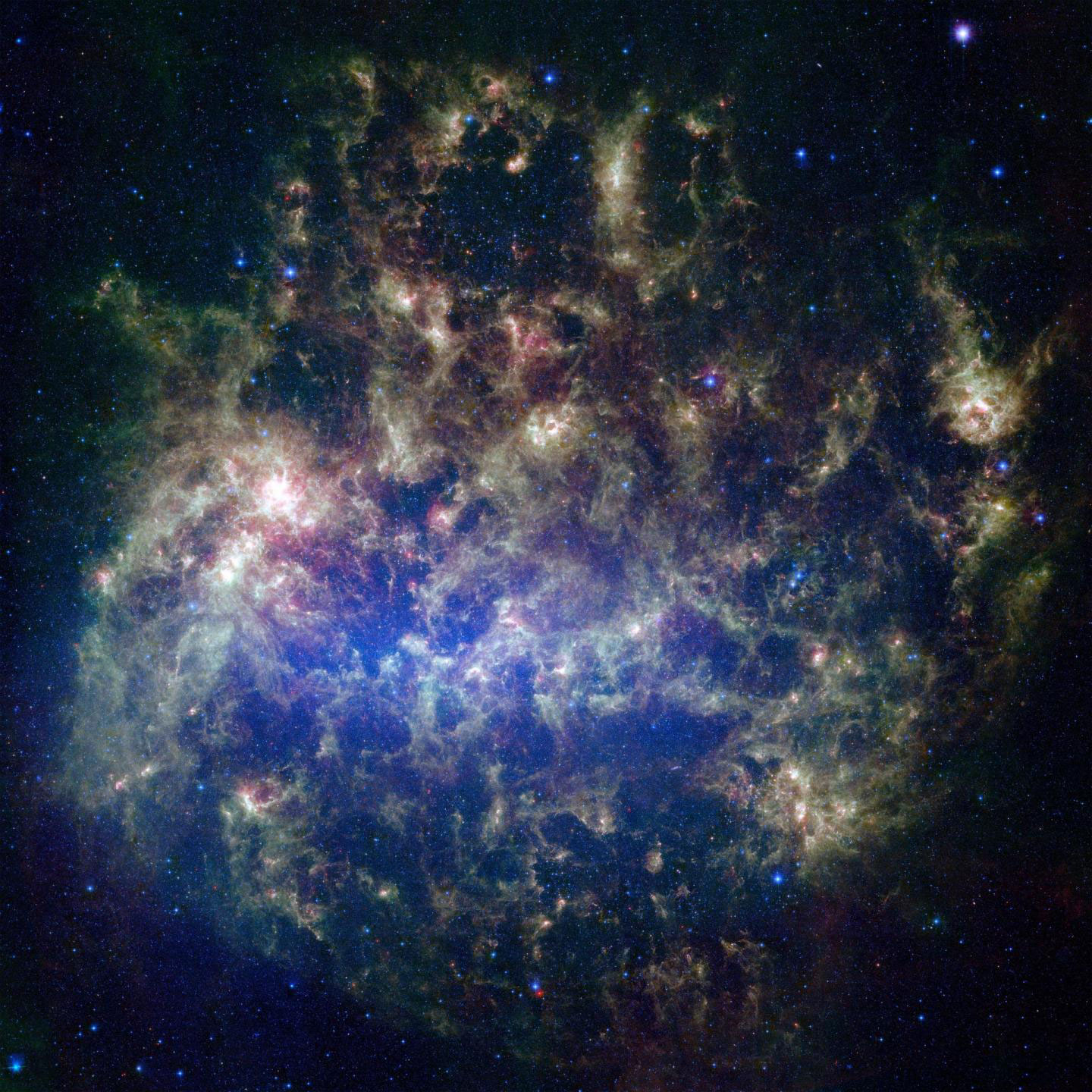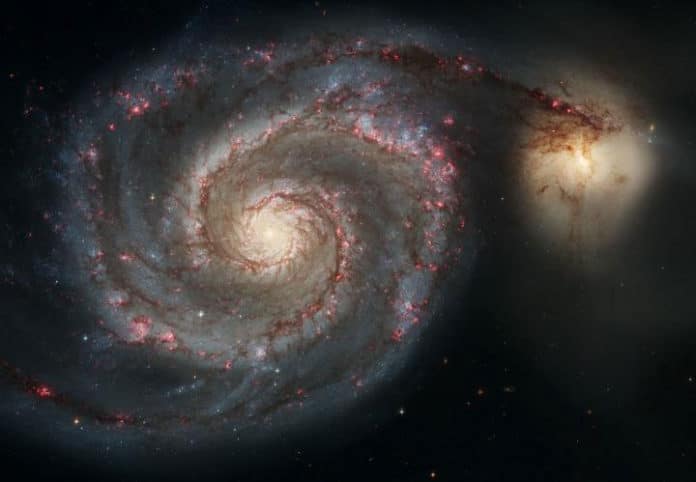In a new study by Durham University, astrophysicists suggest that our solar system could get blasted into space after a newly-predicted collision with a nearby dwarf galaxy. The study also predicts that the Large Magellanic Cloud (LMC) could hit the Milky Way in two billion years’ time.
The catastrophic coming together with the Large Magellanic Cloud could wake up our galaxy’s dormant black hole, which would begin devouring surrounding gas and increase in size by up to ten times.
The collision could occur much earlier than the predicted impact between the Milky Way and another neighboring galaxy, Andromeda, which scientists say will hit our galaxy in eight billion years.
Scientists reported- as it now dynamic black hole would toss out high-energy radiation and keeping in mind that these cosmic firecrackers are probably not going to influence life on Earth. And there is also a chance that the collision could send our solar system hurtling into space.

CREDIT
NASA/JPL-Caltech/STScI
Lead author Dr Marius Cautun, a postdoctoral fellow in Durham University‘s Institute for Computational Cosmology, said: “While two billion years is an extremely long time compared to a human lifetime, it is a very short time on cosmic timescales.
“The destruction of the Large Magellanic Cloud, as it is devoured by the Milky Way, will wreak havoc with our galaxy, waking up the black hole that lies at its center and turning our galaxy into an ‘active galactic nucleus’ or quasar.
“This phenomenon will generate powerful jets of high energy radiation emanating from just outside the black hole. While this will not affect our Solar System, there is a small chance that we might not escape unscathed from the collision between the two galaxies which could knock us out of the Milky Way and into interstellar space.”
Co-author Professor Carlos Frenk, Director of the Institute for Computational Cosmology, Durham University, said: “Beautiful as it is, our Universe is constantly evolving, often through violent events like the forthcoming collision with the Large Magellanic Cloud.
“Barring any disasters, like a major disturbance to the Solar System, our descendants, if any, are in for a treat: a spectacular display of cosmic fireworks as the newly awakened supermassive black hole at the center of our galaxy reacts by emitting jets of extremely bright energetic radiation.”
Until now, astronomers believed that it would either orbit the Milky Way for many billions of years or, since it moves so quickly, escape from our galaxy’s gravitational force.
In any case, ongoing estimations show that the Large Magellanic Cloud has about twice as much dark matter than thought earlier. The specialists state that since it has a longer than anticipated mass, the Large Magellanic Cloud is quickly losing energy and is destined to slam into our cosmic system.
Astronomers noted, “The collision between the Large Magellanic Cloud and the Milky Way could be spectacular.”
Dr Alis Deason, of Durham University’s Institute for Computational Cosmology, said: “We think that up to now our galaxy has had only a few mergers with very low mass galaxies.
“This represents very slim pickings when compared to nearby galaxies of the same size as the Milky Way. For example, our nearest neighbor, the Andromeda galaxy, devoured galaxies weighing nearly 30 times more than those consumed by the Milky Way.
“Therefore, the collision with the Large Magellanic Cloud is long overdue and it is needed to make our galaxy typical.”
The findings are published today (Friday, 4 January) in the journal Monthly Notices of the Royal Astronomical Society.
